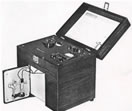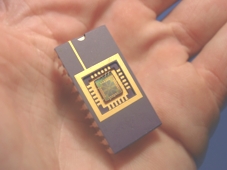About Sensor100
![]()
Objectives
Promotion of the commercialisation of bio-sensors and chemo- sensors |
||
Exploration of the opportunities for global open innovation through the Internet |
||
Link those active in the research, development and commercialisation of sensors |
||
Provide a focal point for global developments in bio- and chemo-sensor technology |
Why Sensor100?
It's been just over 100 years since Fritz Haber and Zygmant Klemensiewicz developed the glass electrode to measure hydrogen activity, although it wasn't until 1935 that it bacame practical following the introduction of the first Beckman pH meter. Sensor100 builds on that first 100 years of development activity.
Today, many different bio-sensors and chemo-sensors are routinely used in clinical diagnosis, agriculture, chemical and food production, environmental monitoring, and more recently in detecting biological and chemical weapons.
Some Background
Just over 30 years ago, in a basement laboratory at Texas A&M University, there was launched Sensor - the International Newsletter of Selective Electrode Technology. It was edited by Michael Brand, and staffed by members of his research group: Mysore Mohan, Hilary Himpler, John Hiller and others. At that time, the sensor literature was not voluminous, and it was possible to know most people in the chemical sensor community. WIth financial support from Beckman, Corning, Radiometer and others, Sensor quickly developed an audience. Unfortunately, it did not survive when people moved on to pursue their careers.
Sensor100 is a 21st century version of Sensor, utilising the resources of the Internet, rather than being hand typed and reproduced on a rather startling shade of paper called Golden Rod.

Beckman pH Meter
1935

Imec Micro-Sensor
2006